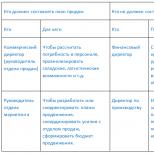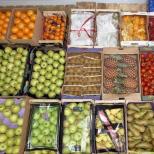7. FINANCIAL PLAN
* Calculations use average data for Russia
444 000 ₽
Starting investments
112 000 ₽
20 000 ₽
Net profit (from 2 machines)
14 months
Payback period
Coffee vending trade is one of the most popular types of vending business. In this business plan, we have given profitability calculations using the example of two coffee machines with a standard assortment.
1. PROJECT SUMMARY
This project considers the organization of a vending business in the city of Bataysk. The goal of the project is to meet the demand of the local population for hot drinks and make a profit. For the implementation of the project, two retail outlets with high pedestrian traffic and the presence of a potential audience (shopping center and railway station) are rented, where vending machines are installed.
The main advantages of the coffee vending business:
does not require large investments;
ease of maintenance;
no need for staff, the possibility of servicing the business directly by an individual entrepreneur;
high level of profitability;
low price in comparison with other providers of similar services, which is ensured by low costs;
Possibility to work around the clock.
The initial investment is 444,000 rubles. Investment costs are directed to the purchase of equipment, ingredients, advertising campaign, business registration and the formation of working capital, which will cover the losses of the initial periods. The main part of the required investments falls on equipment and amounts to 90%. Own funds will be used to implement the project.
The financial calculations cover the five-year period of the project's operation. Forecasts for revenue and net profit are made based on a sales plan of 2,500 units and an average bill of 45 rubles. According to the calculations, the initial investment will pay off in 14 months of work. Return on sales in the first year of operation will be 28%. Integral performance indicators are shown in Table 1.
Table 1. Key performance indicators of the project
2. DESCRIPTION OF THE INDUSTRY
In recent years, a new type of trade, vending, has been actively developing in Russia. This is a business based on the use of specialized vending machines for the products of the FMCG group. This category includes consumer goods with a fast turnaround time: hot and cold drinks for bottling, food, etc.
To date, the domestic vending market is estimated at 3-4 billion rubles and is growing annually by an average of 20%. According to the National Association of Automated Trade, there are about 60,000 vending machines in Russia, of which 15,000 are located in Moscow. However, the statistics of sales of vending machines in 2016 indicates the development of vending trade not only in the capital, but also in the regions. More than 75% of Russian vending is concentrated in million-plus cities, while regional markets still remain almost free.
The share of vending in Russian trade is 1%, while in Europe the average is 5%. The coverage density of vending machines in Russia is 625 people per vending machine, which, in comparison with other countries, indicates the great potential of vending trade. For example, in Japan, there is one automatic machine for 23 people, in the USA - for 35, and in Western Europe - for 110 people. From this it follows that in the coming years we can expect a five-fold increase in the vending market in Russia. According to experts, the domestic vending market is only 10% full.
Despite the positive forecasts for vending, this industry is currently going through a crisis period. In 2015, the vending market decreased by 23.5% in monetary terms, and in 2016, the market growth slowed down significantly. These trends are related to changes in the Federal Law on the Application of CCP No. 54 dated May 22, 2003, which obligated vendors to equip all devices with a new CCP system. This led to an increase in costs and even the exit of entrepreneurs from the market. The owners of used machines that do not provide for the introduction of CCP also suffered. The second reason for the negative trends was the growth of the dollar, which led to a significant increase in the cost of imported equipment. However, this contributed to import substitution in the vending machine market: domestic manufacturers offer equipment that, while maintaining quality, is 30% cheaper than foreign analogues. Therefore, experts positively assess the prospects for the vending market in Russia and predict high growth rates, despite the rather difficult market situation.

Prospects for the vending market are assessed not only in terms of its actual and potential volume, but also in terms of its structure. Currently, vending trade in Russia is not very diverse: 60-65% of the market is occupied by coffee machines, 20-25% by snack machines, and the remaining 10% is accounted for by vending machines for cold drinks, hot meals, etc. Thus, the greatest competition is observed in the coffee segment. This popularity of coffee machines is determined by three parameters: firstly, coffee is a suitable product for sale in vending machines, since it is consumed on the go; secondly, coffee from a vending machine is cheaper than drinks offered in catering establishments; thirdly, due to their compactness, coffee machines can be placed where a cafe cannot. The main advantages of coffee machines that influence consumer choice are speed, availability, low price.
For entrepreneurs, the key benefits of vending as a business are:
low entry threshold;
installation area less than 1 m2;
high profitability;
margin on the goods is about 300%;
ease of maintenance;
the vending business can be combined with other business options, since it takes several hours a week to service the machines;
Ready-made ideas for your business
However, when planning a business, its disadvantages should also be taken into account. A significant problem in the organization of vending trade is the choice of a suitable place to install the machine. It is the favorable location that ensures the level of sales. To find such a place, the entrepreneur is forced to carefully analyze each potential point for installing the machine, or be ready to pay a significant amount for rent. Most of the profitable points in large cities are already occupied - railway stations, shopping malls, airports, etc. In this case, you need to bet not only on the location of the machine, but also on the quality characteristics of the products: the use of unusual coffee varieties, the original recipe for preparation, and the variety of assortment.
3. DESCRIPTION OF GOODS AND SERVICES
At the first stage of work, it is planned to purchase and install two coffee machines at different points. The range is determined based on the characteristics and technical capabilities of the device. Since the competition in the coffee vending segment is quite high, it is necessary to choose devices that will provide competitive advantages. In this case, preference should be given to the model that provides for brewing coffee from ground beans in order to take into account market trends.
For this, vending machines from the manufacturer Jofemar, the Coffeemar G250 model, worth 202,500 rubles, will be purchased. The main characteristics of the device:
screw dispenser eliminates the error when adding the ingredient;
the built-in program is designed for 15 different drinks;
The backlight of the front of the device is carried out by LEDs, which saves energy consumption;
self-cleaning function facilitates maintenance of the device;
payment options: bills, banknotes, bank cards;
bulk containers for ingredients;
function "own mug";
the ability to control and manage the device through a mobile network.
Competitive advantages of the company: grain coffee, wide range, low price.
Table 2 shows the range of products, the calculation of the cost and the approximate cost of the drink.
Table 2. Range of coffee machines and cost calculation
|
Type of drink |
Glass with a spoon, rub. |
Drink, rub. |
Milk, rub. |
Sugar, rub. |
Yield, ml (g) |
Total s/s |
Price, rub |
|---|---|---|---|---|---|---|---|
|
Espresso |
|||||||
|
Americano |
|||||||
|
Cappuccino |
|||||||
|
Mocachino |
|||||||
|
Hot chocolate |
|||||||
|
Glissé coffee |
|||||||
|
Milk shake |
|||||||
|
vanilla syrup |
|||||||
|
hazelnut syrup |
|||||||
|
strawberry syrup |
4. SALES AND MARKETING
The target audience of coffee vending machines is city residents who need to drink coffee for a small fee, while reducing the time it takes to prepare the drink: students, office workers, tourists, passers-by. Depending on the location of the vending machines, the target audience also differs:
Universities - students, young people aged 18-25;
Stations - men and women with an average income;
Shopping malls - middle-income families;
Cinemas - young people, students, people aged 16-50;
Business centers - office workers.
The main advertising tool for vending machines is their location. The most successful points are: stations, markets, educational institutions, shopping centers, car washes, stadiums, public transport stops. It is recommended to select retail outlets based on the results of geomarketing research, taking into account pedestrian traffic of at least 1.5 thousand people per hour during daylight hours.

Marketing in the vending market is quite specific, like the form of trade itself, so each advertising tool must be adapted. For example, the use of outdoor advertising for vending is expensive and inefficient, and "event marketing", which provides for various promotions, is quite difficult to implement in this segment. To attract consumers, you can use the following promotion: mark several cups for drinks and place information about the promotion on the machine. The client who gets the marked cup receives a guaranteed prize. For convenience, this can be a recharge on the phone. To receive your prize, the client just needs to call the contact number, and the organizer of the action - to replenish the account with a symbolic amount (100 rubles). In practice, this promotion, which is carried out during the week, allows you to increase sales of the coffee machine by 20 glasses a day, or 140 glasses a week. Additional revenue will average 5,600 rubles with advertising costs of about 500 rubles.
The most effective advertising for vending machines is outdoor advertising aimed at visually highlighting the outlet. To do this, you should use: pillars, streamers, signs, aromamarketing. You can focus on the coffee machine and increase customer loyalty by arranging an area next to the machine. If the terms of the contract with the landlord and the place allow, next to the coffee machine you can make a space for relaxation - put a table, bench or sofa.
Ready-made ideas for your business
Another way to attract attention is branding your machine. An additional plus of this tool is to increase the recognition of the coffee machine. Branding can be done by ordering a sticker film from a printing house or by painting the surface with original, bright graffiti. Development of a layout and printing of a vinyl sticker will cost about 1,500 rubles.
For advertising food products, aroma marketing is very relevant - attracting customers with a smell. The fragrance is directly related to the product and can evoke quick, clear associations. This is especially true for vending, since the goods located in the machine cannot be seen or tasted. For a coffee machine, the most suitable scents are coffee or chocolate. In addition, these smells have been proven to stimulate appetite. Practice shows that 80% of buyers unconsciously focus on the smell. Air aromatization can increase sales by 15%. Aromatization is especially relevant in places of impulsive demand. The aroma is felt within a radius of 1-5 meters and can attract people who will not pay attention to the vending machine itself. To flavor the coffee machine, an aroma device is installed on the outside - it is preferable to place it near the bill acceptor. At the same time, the most uniform distribution of aroma is achieved, and the products themselves do not come into contact with the device. Aromatization technology based on gel cartridges will cost about 1,500 rubles per month, with equipment costing 3,000 rubles.
The marketing strategy of this project includes: holding an action with labeled glasses, branding the vending machine with a vinyl sticker and flavoring the street space. Thus, the cost of initial advertising will amount to 7,000 rubles.
The planned sales volume is 1250 cups per month from each vending machine. The planned revenue is 112,500 rubles per month. It is planned to receive additional income for advertising on the sides and front panel of the machine. The cost of advertising on the side is 4000 rubles / month, on the front panel - 750 rubles / month. During the year, it is planned to conclude annual contracts for advertising. Thus, the amount of additional income will be 9500 rubles per month.
5. PRODUCTION PLAN
For the implementation of the project, it is planned to rent two retail outlets with an area of 1m2 each. One of the machines is planned to be installed in the station building, and the second in the shopping center. The cost of renting two points will average 7,000 rubles, since both points are characterized by high pedestrian traffic.
In the lease agreement, it is recommended to prescribe all the conditions for cooperation: the amount of rent, guarantees, obligations of the parties, the degree of responsibility of the landlord, payment of other expenses. It is also worth considering the option of including electricity costs in the rent. The cost of electricity consumed by grain coffee machines averages 1000 rubles per month. In this project, electricity costs are not included in the rent and are accounted for separately in the amount of 2,000 rubles per month.
Ready-made ideas for your business
Having decided on the place, it is necessary to install coffee machines. The installation process takes a little time and is carried out by the company that sells this equipment. The presence of an outlet is the only technical condition for installing a coffee machine.
Maintenance of the machine often comes down to changing ingredients and utensils, as well as withdrawing money (if the machine is full, it will simply stop accepting money). It is recommended to check the machine once every 2-3 days to make sure that the equipment is safe and in good condition, and the availability of ingredients. When working with 2-5 machines with ongoing maintenance, the business owner can easily handle it on his own. When expanding the network of vending machines, you should hire an employee who will service the equipment.
An important step in the organization of vending trade is the purchase of ingredients, disposable tableware and bottled water. To date, the market has a variety of suppliers of products for coffee machines. To make a choice in favor of one or another manufacturer should be at the self-tasting of the product. The main criterion is the maximum naturalness of the product. The water used in coffee machines must be bottled and from the same brand, as the machine may malfunction when the water hardness level changes. All products must have the appropriate quality certificates. Monthly expenses for ingredients will amount to 33,000 rubles based on the planned sales volume of 1250 cups per month from each machine.
6. ORGANIZATIONAL PLAN
The initial stage of vending trade is the registration of business with state bodies. To implement the project, an individual entrepreneur is registered with a simplified UTII taxation system (the tax is calculated based on the number of vending machines and the k2 coefficient for the city of Bataysk). The choice of taxation system depends on the location of vending machines: a fixed rate is preferable if the machines are located in places of high demand (shopping malls, railway stations). If the outlet has a pronounced seasonality of demand or an average level of pedestrian traffic, then it is more correct to choose a method of taxation that depends on profit. Type of activity according to OKVED-2: 47.99.2 Activities for the implementation of trade through automatic machines.
Schedule of coffee machines: station - around the clock; SEC - from 10:00 to 22:00. This project does not provide for a staff, since the operation of coffee machines will be provided directly by an individual entrepreneur who will also keep accounting records. If the project requires the services of an accountant, it is recommended to use outsourcing.
7. FINANCIAL PLAN
The financial plan takes into account all the income and expenses of the project. To launch the project, it is necessary to calculate the amount of initial investment. To do this, you need to determine the costs for the purchase of equipment, ingredients, an advertising campaign, business registration and the formation of working capital, which will cover the losses of the initial periods. The main part of the required investments falls on equipment and amounts to 90%.
Table 3. Investment costs
|
Name |
Amount, rub. |
|
|---|---|---|
|
Equipment |
||
|
Equipment |
||
|
|
|
|
|
Intangible assets |
||
|
Business registration |
||
|
working capital |
||
|
Purchase of raw materials |
||
|
working capital |
||
|
|
Total: |
|
Variable costs consist of the cost of the ingredients that are used to make drinks and the energy used in doing so. To simplify financial calculations, variable costs are calculated based on the average cost of a drink and a fixed trade margin of 330%.
Fixed expenses consist of rent, utility bills, advertising costs, taxes and depreciation. The amount of depreciation is determined by the straight-line method, based on the useful life of fixed assets in 5 years.
Table 4. Fixed costs
Thus, fixed monthly expenses were determined in the amount of 59,074 rubles. The volume of planned revenue is 122,000 rubles per month with sales of 1250 glasses from each machine and income from advertising on the surface of the machines. In the revenue structure, 74% comes from sales revenue and 26% from advertising revenue.
8. PERFORMANCE EVALUATION
The payback period of the project with an initial investment of 444,000 rubles is 13-14 months. The net present value is positive and equal to 118,101 rubles, the internal rate of return (IRR) is higher than the discount rate. It is planned to reach the planned sales volume in the fourth month of work. At the same time, the net monthly profit of the project will be 37,900 rubles. Return on sales in the first year of operation will be 28%. These figures indicate the investment attractiveness of the project.
9. POSSIBLE RISKS
To assess the risk component of the project, it is necessary to analyze external and internal factors. For the vending business, the following types of risk are distinguished.





